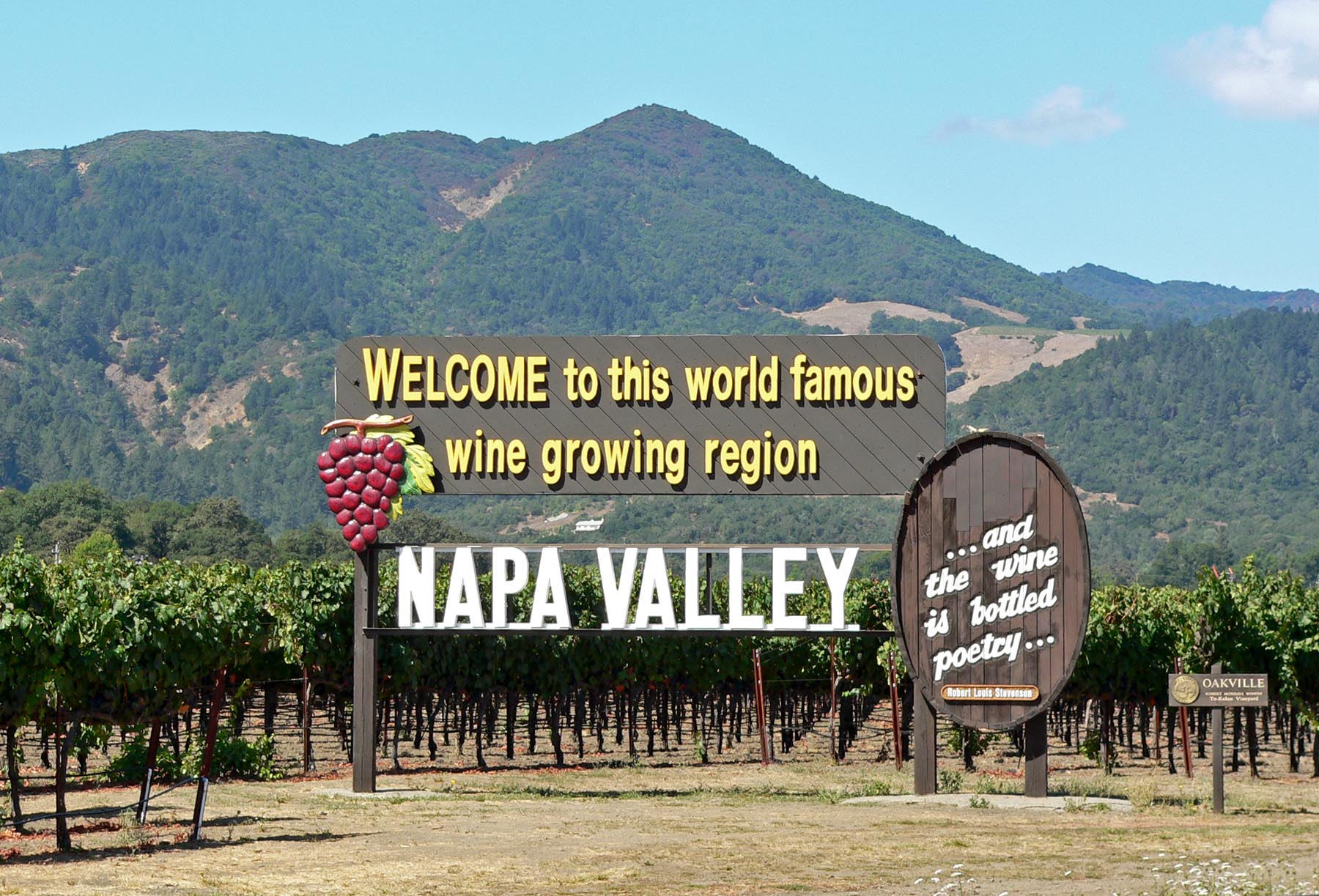What Makes Napa Valley So Special
Sunshine, warmth, elegance, and opulence. These are words that come to mind when describing Napa Valley, what many consider to be one of the world’s greatest wine producing regions. What makes Napa so unique? Location, climate and terroir: mountains, benchlands and valley floors, diurnal temperature swings, fog and marine air flow, over 100 types of soil… these features and more combine make this the special place that it is.
Relatively small in size, Napa measures approximately 50 kms long by 8 kms across at its widest point. When people think of California wine , they most often think of Napa. Strangely, Napa is responsible for only about 4% of California’s wine production. Many of the producers are small estates, but there are some exceptions.
History of Napa Valley
The history of wine production in Napa began with the first commercial winery started by John Patchett in 1858. Patchett hired Charles Krug to produce his first vintage. Later Krug went on to start his own commercial winery in 1861 which is still in operation today. After this, many followed suit and opened other commercial wineries.
Wine production is Napa has not been without its setbacks. The first of which was the infestation of the root louse Phylloxera in the late 1800’s. This plague killed over 80% of all grapevines in Napa and took almost 100 years to mend. Shortly after, prohibition was introduced in 1920 and then the Great Depression started in 1929. Most wineries had to close, and farmers were forced to switch to producing walnuts, prunes or apricots to earn a living.
It wasn’t until after WWII that Napa once again started to grow and flourish. In the mid 1970’s, Napa got the needed boost to their international reputation. The 1976 Judgement of Paris was a wine competition organized in Paris and featured 9 French, a British and an American judge. This was a blind tasting of top-quality Napa Chardonnay’s and Cabernet Sauvignon against the best wines of Burgundy and Bordeaux. A Napa Chardonnay and Cabernet sauvignon took top place in both categories. News quickly spread around the world of the results and helped to launch the region’s reputation as a producer of world class wines.
Modern Challenges
Today, there are currently over 500 wineries operating in Napa Valley. With increased quality of wines and number of wineries, different challenges have appeared. These include land cost, climate change, soil erosion, water quality and labour costs. It could be argued that climate change is the single largest challenge of the modern era by increasing the risk of drought and wild fires. To be proactive, some farmers have chosen to replant varietals that are better suited to the changing climate in an era of global warming.
Napa Valley Grape Varieties
The diversity of Napa’s terroir and climate allow for the planting and flourishing of many varietals. Of these, approximately 20% are white and 80 % are red, the most popular being Cabernet Sauvignon and Chardonnay which make up approximately 65-70% of all plantings. However, Napa’s Mediterranean climate allows growers to experiment with unique varietals such as Albarino, Malvasia Bianca and Tempranillo.
Following is a description of the main varietals planted in Napa. The king is Cabernet Sauvignon which accounts for more than 50% of all plantings. Typical Napa Cabernet has nice soft ripe tannins and is deeply coloured. Notes of black currant, black cherry and spice from oak aging are often present. Chardonnay would be the next most important varietal. Due to the varied micro climates of Napa, there are many styles of Chardonnay being made. These may include a buttery rich oaked style with tropical fruits and caramel notes or a crisp, lean unoaked wine with flavours of apple, pear and citrus fruits. Merlot has been widely planted in Napa since the early 70’s. This varietal which was used for blending has similar characteristics to Cabernet apart from being softer in tannin and having more body and less structure than Cabernet. This grape however can produce fantastic wines on its own. Pinot Noir also know as the ‘heart break grape’ has long been the nemesis of many a winemaker. Napa has several exceptional Pinot Noir growing areas, Carneros and Russian River to name two. Both areas are influenced by Pacific Ocean cool breezes and fog which help to maintain acidity while keeping soft tannins and producing soft red fruit on the palate. Sauvignon Blanc is another white wine that does well in Napa. Typically, the wine has herbaceous and grassy notes with vibrant acidity. However, there are some producers using oak aging to further add layers of complexity of the wines produced. Zinfandel is the last of the most important grape varietals grown in Napa. It can be crafted into zippy, jammy reds or light and fruity rosés
Best Napa Valley Wines To Buy
With over 500 Napa wineries to choose from, it helps to have professionals search the valley to bring you top-rated wines ready for delivery at your doorstep. TrySpottswoode Cabernet Sauvignon, for a wine that has been compared to the Chateau Margaux of Napa. This is a great example of Napa Valley Cabernet and comes with a pedigree to prove it. For a little less money, you can enjoy , which made from a virtual winery that sources fruit from quality growers through long term contracts.
Whatever your Napa Valley wine needs are, your consultants at the Small Winemakers Collection can help you find the right one.

